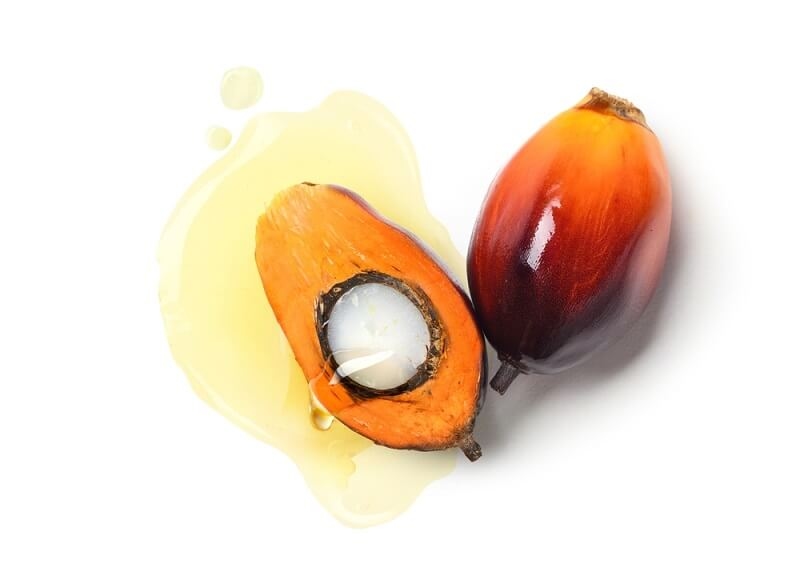
Among all the cooking oils, palm oil is the most controversial one. To some, it is just a plain ingredient with high cultural significance, but to others, it is controversial in terms of its health benefits. Aside from the scandals, though, there exists an interesting history, particularly in Africa, where red palm oil has been consumed for centuries. Is palm oil healthy? Beyond flavor, it is nutritionally dense in palm oil, made up of vitamins, minerals, and palm oil antioxidants. Knowing the place of palm oil nutrition in the African diet also sheds light on how and why it has endured and how and where it can be integrated into the current well-balanced diet.
Palm oil is extracted from the oil palm fruit, which is heavily planted in West and Central Africa. Whereas most vegetable oils exist in one form, palm oil exists in two forms, namely, refined palm oil and red palm oil, the latter lacking the natural reddish-orange color because of an excess of carotenoids.
Nutrition-wise, palm oil nutrition is excellent in that it retains combined saturated and unsaturated fats, and is a concentrated source. Red palm oil has Vitamin A, Vitamin E, and Vitamin K available in concentrated form in a tiny serving. Its unique composition contributes to the formation of energy, cellular processes, and overall well-being, making it distinct from the oils packed in most Western pantries.
Part of the reason why African societies have pursued red palm oil in such huge numbers has to do with the fact that it is an enormous reservoir of palm oil vitamins and minerals. Beta-carotene, which is Vitamin A's precursor, is plentiful. Vitamin A is what vision, the immune system, and skin health rely on, so red palm oil is an absolutely essential food during times of deficiency.
Apart from Vitamin A, red palm oil contains Vitamin E, which exists mainly in the form of tocotrienols. They are fat-soluble antioxidant vitamins that lower oxidative stress and inflammation. Vitamin K is one of the fat-soluble vitamins contained in palm oil, and it helps to promote blood clotting as well as bone health.
There are also minerals available there, though less so. Red palm oil does include magnesium, iron, and calcium as ingredients, all of which are involved in cellular processes, oxygen transport, and bone density. Adding the use of this oil in moderation to a diet will effectively substitute for nutritional deficiencies for these essential nutrients.

The most common question asked by nutritionists is: Is palm oil healthy for me? The answer is complex. Red palm oil contains about equal quantities of saturated and unsaturated fats. Although saturated fats have been on the scene for centuries, associated with heart disease, more recent studies suggest that it is a matter of the type of saturated fat that is the issue. The fatty acids in red palm oil might not raise cholesterol as much as has been thought.
Aside from the fats, there are also antioxidants from palm oil that are required. Tocotrienols and carotenoids serve to guard against oxidative stress, which is associated with chronic disease, including cardiovascular disease. Added to the nutrient profile of the oil itself, red palm oil is not merely a culinary fat — it's a functional food that contributes to health when eaten in moderation.
African traditional diets provide hints on how the advantages of these products can be counterbalanced. Palm oil is never employed without being accompanied by high-fiber vegetables, legumes, and cereals. This helps to optimize intake of nutrients without paying the undesirable price of saturated fat.
Red palm oil benefits, or commonly known as African red palm oil benefits, are specific and non-nutritional in kind. Amongst the most significant of them include:
Eye Keeping: Beta-carotene, which is a vitamin A in red palm oil, is used to keep the eyes healthy and prevent night vision.
Immune System Health: Vitamins E and A help in stimulating the immune system by avoiding infection.
Skin and Hair Care: Externally and internally, antioxidants in red palm oil keep the skin and hair healthy and prevent premature aging.
Cardiovascular Protection: Due to the presence of saturated fat, the antioxidants and special fatty acids can potentially stifle inflammation and oxidative stress and ensure excellent heart health.
Supply of Energy: Due to its rich caloric content and nutritional value, palm oil is a very good source of renewable energy, especially where the general activity levels are high like in traditional African society.
The cultural and culinary significance of palm oil in African foods is vast. Red palm oil is used to flavor and add nutrition to ordinary and ceremonial foods. Red palm oil is used in certain traditional manners, such as:
Jollof Rice: West African staple dish wherein rice is cooked with tomatoes, spices, and palm oil, giving a special flavor and reddish color.
Egusi Soup: Melon seeds are ground and utilized in preparing Nigerian soup, with vegetables, to be served alongside palm oil as a flavor as well as nutritional content.
Moambe Chicken: Boiled chicken is employed in Central African cooking where chicken is prepared in a rich sauce prepared on palm oil, tomatoes, and spices.
Fufu Accompaniments: Palm oil is sprinkled over starchy food such as fufu or cassava, which contributes texture as well as nutrients.
These foods discourage the perpetuation of the use of palm oil in its sole form. Mixing with vegetables, cereals, and proteins is critical to achieving balanced nutrient intake using cultural foods.
Red palm oil's richest aspect is its antioxidants, which are carotenoids and tocotrienols. They are a mechanism of defense of the body against oxidative stress. Oxidative stress occurs when free radicals devastate cells and have the potential to cause long-term diseases such as heart disease, diabetes, and some forms of cancer.
By consuming palm oil, particularly the red variety, individuals gain a natural reservoir of antioxidants. This is beneficial for modern diets that are most likely lacking in enough fresh fruits and vegetables. The tocotrienols in palm oil, which no other oil contains, have also been associated with neuroprotection enhancing brain function and health.
If you count red palm oil as a source of palm oil health benefits and nutrition, then the following are some of the good purposes to use it safely and appropriately:
Moderation is the Key: Red palm oil is healthy, but it has calories. Use a little in every meal for benefits.
Use with Vegetables: Mixing palm oil with green vegetables or high-fiber vegetables aids in nutrient absorption, especially fat-soluble vitamins.
Do Not Fry at High Temperatures: While palm oil is highly resistant to heat, its antioxidants can be killed by excess heat. Sauté, stew, or low-fry it.
Mix with Other Oils: Palm oil mixed with other monounsaturated fat-rich oils, i.e., olive or avocado oil, will be useful in maintaining the fat intake as well as the cardiovascular system healthy.
Through such practices, the conventional usage and nutritional benefit of red palm oil may be made available without causing any ill effect on health.
Western nutrition is not a big fan of palm oil in general.
Refined and African Red Palm Oil: Refined oil basically has nearly all of its nutritional value removed, while African red palm oil is packed with vitamins, minerals, and antioxidants.
Environmental vs. Nutritional Issues: Sustainably sourced is one thing, yet well-sourced palm oil keeps its nutritional value.
Saturated Fat Problems: Palm oil does contain saturated fat, but it is the quality and quantity consumed that will affect health. African traditional food is the model of balance and moderation.
With this awareness comes the distinction of asking if palm oil is healthy to consume on a contemporary diet.
Its demand in the rest of the world is growing. Beyond flavor, its nutritional value attracts health-conscious consumers. Its red color, natural carotenoids, and vitamins and minerals in palm oil qualify it as a great soup, salad, stew ingredient as well as an additive.
For American consumers looking for natural sources of Vitamin A, E, and K and for effective antioxidants, red palm oil provides an alternative to extremely refined oils. It can add flavor when used as a cooking oil and provide nutrition, the result of centuries of traditional use throughout Africa. The opinion about palm oil here may not be correct as information is changing on the internet every day. It is recommended that you confirm the details before proceeding to believe them.
This content was created by AI